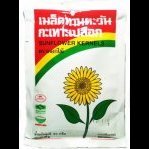Muay Thai Similarities to Other Martial Arts - Kali, etc.
-
Most Recent Topics
-
Latest Comments
-
By Snack Payback · Posted
I can only comment on Perth. There's a very active Muay Thai scene here - regular shows. Plenty of gyms across the city with Thai trainers. All gyms offer trial classes so you can try a few out before committing . Direct flights to Bangkok and Phuket as well. Would you be coming over on a working holiday visa? Loads of work around Western Australia at the moment. -
By Kevin von Duuglas-Ittu · Posted
[someone posting that students shouldn't be allowed to spar without 6 months in Foundations Class] Not to respond too directly to the above statement, more to just this kind of advisement which is maybe common, but it just shows how far trad Muay Thai development was from today's class centric, out of Thailand (but probably in some parts of Thailand too) is. They are just two very different worlds and practices. Sparring, especially as it seems it was in the Golden Age...was part of foundations. Yes, there was a lot of grueling bag work or shadow boxing, but sparring playfully in space was part of young fighter development. It's not this extreme, but its a bit like saying you shouldn't get on a surf board until you have the fundamentals down for many months. The point was to assemble fundamentals in relationship to others. And, I certainly understand there are huge differences between these worlds, Westerners spar with different intents. It's only to point out that what Thais traditionally achieved was through very different sensibilities over what Muay Thai even was. It much more than this, I hope to finish an article on how trad Muay Thai is developed as social rite of passage way-of-life development, but at minimum there is a huge difference in concept in how skills should be acquired. -
By Kevin von Duuglas-Ittu · Posted
Just published a rough copy of my watching notes for all 11 of Wichannoi's fights:
-
-
The Latest From Open Topics Forum
-
By Snack Payback · Posted
I can only comment on Perth. There's a very active Muay Thai scene here - regular shows. Plenty of gyms across the city with Thai trainers. All gyms offer trial classes so you can try a few out before committing . Direct flights to Bangkok and Phuket as well. Would you be coming over on a working holiday visa? Loads of work around Western Australia at the moment. -
By kkadzielna · Posted
Hi, I'm considering moving to Australia from the UK and I'm curious what is the scene like? Is it easy to fight frequently (proam/pro level), especially as a female? How does it compare to the UK? Any gym recommendations? I'll be grateful for any insights. -
By kkadzielna · Posted
You won't find thai style camps in Europe, because very few people can actually fight full time, especially in muay thai. As a pro you just train at a regular gym, mornings and evenings, sometimes daytime if you don't have a job or one that allows it. Best you can hope for is a gym with pro fighters in it and maybe some structured invite-only fighters classes. Even that is a big ask, most of Europe is gonna be k1 rather than muay thai. A lot of gyms claim to offer muay thai, but in reality only teach kickboxing. I think Sweden has some muay thai gyms and shows, but it seems to be an exception. I'm interested in finding a high-level muay thai gym in Europe myself, I want to go back, but it seems to me that for as long as I want to fight I'm stuck in the UK, unless I switch to k1 or MMA which I don't want to do. -
Hi all, Does anyone know of any suppliers for blanks (Plain items to design and print a logo on) that are a good quality? Or put me in the right direction? thanks all
-
The first fight between Poot Lorlek and Posai Sittiboonlert was recently uploaded to youtube. Posai is one of the earliest great Muay Khao fighters and influential to Dieselnoi, but there's very little footage of him. Poot is one of the GOATs and one of Posai's best wins, it's really cool to see how Posai's style looked against another elite fighter.
-
-
Forum Statistics
-
Total Topics1.4k
-
Total Posts11.5k
-
Footer title
This content can be configured within your theme settings in your ACP. You can add any HTML including images, paragraphs and lists.
Footer title
This content can be configured within your theme settings in your ACP. You can add any HTML including images, paragraphs and lists.
Footer title
This content can be configured within your theme settings in your ACP. You can add any HTML including images, paragraphs and lists.


Recommended Posts
Create an account or sign in to comment
You need to be a member in order to leave a comment
Create an account
Sign up for a new account in our community. It's easy!
Register a new accountSign in
Already have an account? Sign in here.
Sign In Now